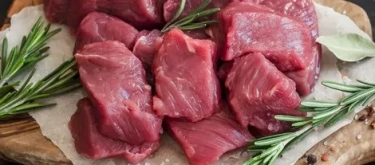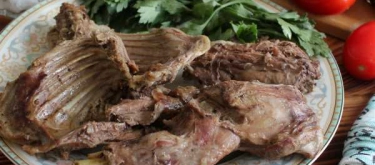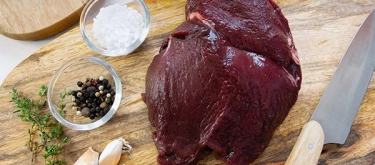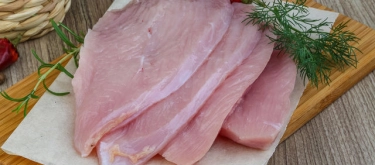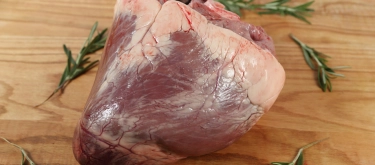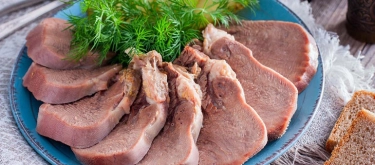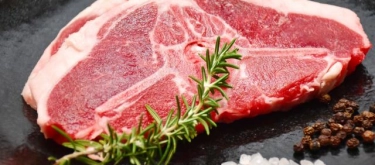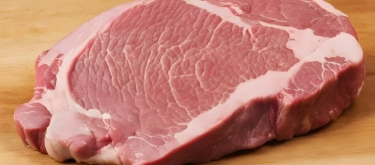Ostrich Meat: Taste Profile, Aroma, Benefits and Health Risks
Ostrich meat is a unique and increasingly popular alternative to traditional red meats. Renowned for its lean composition, high protein content, and distinct flavor profile, ostrich meat offers a healthy yet exotic option for meat lovers. This article provides a comprehensive exploration of the sensory characteristics of ostrich meat, an in-depth flavor analysis, its culinary applications, nutritional insights, and additional details that make it a standout choice in modern cuisine.
What does Ostrich Meat taste like?
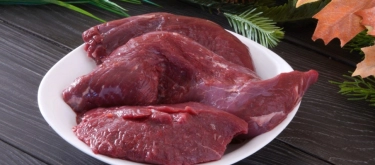
Taste, Aroma, Texture, and Visual Appearance of Ostrich Meat
Taste:
Ostrich meat is celebrated for its mild, slightly sweet flavor that resembles high-quality beef but with a subtler, less intense profile.
- Flavor Description: When you taste ostrich meat, you experience a delicate balance of savory and slightly sweet notes. Its lean nature allows the natural flavor of the meat to shine through, without the overpowering fattiness often associated with red meats.
Aroma:
The aroma of ostrich meat is fresh and clean, with hints of earthiness and a light, natural meaty scent.
- Aromatic Description: The scent is not as strong as that of traditional beef or lamb, making it an appealing choice for those who prefer a more understated, yet distinctive, meaty aroma.
Texture:
Texture is one of the key attributes that set ostrich meat apart.
- Texture Description: Ostrich meat has a firm yet tender texture with a smooth, almost velvety mouthfeel. Its lean composition results in a satisfying chewiness without the excess fat, and when cooked correctly, it remains juicy and succulent.
Visual Appearance:
Ostrich meat typically presents a deep red color that is both vibrant and inviting.
- Visual Description: The meat’s rich, ruby-red hue signals its high quality and freshness. Its lean marbling is minimal, yet it contributes to an appealing, uniform appearance that distinguishes it from fattier cuts of meat.
In-depth Flavor Analysis of Ostrich Meat
The flavor profile of ostrich meat is the outcome of its unique composition and processing methods:
-
Lean Composition and Natural Sweetness:
Being exceptionally lean, ostrich meat retains a pure, unadulterated flavor that is both delicate and nuanced. Its subtle natural sweetness, derived from its lower fat content, distinguishes it from richer red meats. -
Umami and Savory Balance:
Ostrich meat contains a significant amount of natural umami compounds, which provide a depth of flavor that enhances its overall savoriness. This umami quality offers a satisfying, meaty taste without the heavy fattiness found in some traditional meats. -
Influence of Cooking Techniques:
The method of cooking plays a vital role in flavor development. Grilling or pan-searing ostrich meat can create a slight char that introduces a smoky, caramelized note, complementing its inherent mildness. Conversely, slow-cooking preserves its natural tenderness and subtle taste. -
Synergistic Flavor Enhancers:
When prepared with complementary seasonings—such as herbs, garlic, or a splash of red wine—the flavor of ostrich meat is further elevated, showcasing its versatility and ability to absorb diverse flavor profiles without losing its distinct character.
Culinary Applications of Ostrich Meat
-
Primary Uses:
Ostrich meat can be used in a variety of dishes, from gourmet steaks and burgers to stir-fries and stews. Its lean, tender qualities make it suitable for both quick, high-heat cooking and slow-cooked preparations. -
Popular Applications:
- Grilled Steaks: Seasoned simply with salt, pepper, and herbs to highlight its natural flavor.
- Burgers and Medallions: Formed into patties that offer a healthier alternative to traditional beef burgers.
- Stir-Fries: Thinly sliced and quickly cooked with vegetables and Asian-inspired sauces for a light, flavorful meal.
- Slow-Cooked Stews: Combined with root vegetables and red wine to develop a deep, hearty flavor.
-
Ideal Pairings:
Ostrich meat pairs well with bold herbs like rosemary and thyme, tangy sauces, and fresh vegetables, providing a balanced meal that emphasizes both its health benefits and unique taste.
Selection and Storage of Ostrich Meat
-
Selecting Ostrich Meat:
Choose ostrich meat with a bright, deep red color and minimal visible fat. The meat should be firm to the touch and have a consistent texture, indicating high quality and freshness. -
Storage Recommendations:
Store ostrich meat in the refrigerator at a temperature of 0–4°C if it is to be used within a few days. For longer storage, freeze the meat in airtight packaging to preserve its flavor and texture. Thaw in the refrigerator to maintain quality.
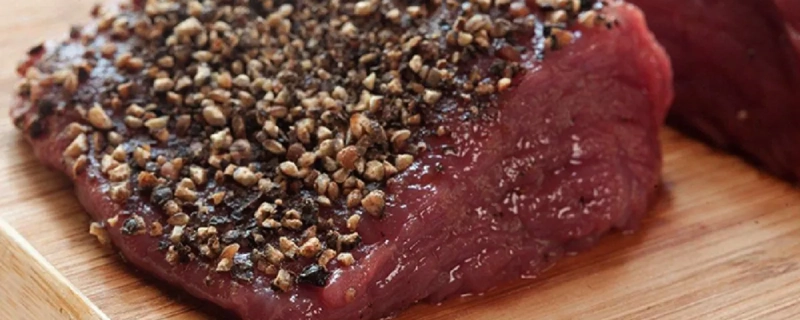
Quick Facts About Ostrich Meat
- Exotic Alternative:
Ostrich meat is an unconventional red meat alternative that offers a unique taste and texture. - Lean and High in Protein:
It is remarkably lean and provides a high level of protein while being low in fat. - Versatile:
Suitable for a range of culinary methods, from grilling to slow-cooking. - Distinct Flavor:
Its mild, subtly sweet flavor makes it an appealing choice for health-conscious consumers. - Cultural Significance:
Ostrich farming and meat consumption are growing industries in various parts of the world, particularly in regions seeking alternative protein sources. - Environmental Benefits:
Ostrich meat is often promoted as an environmentally sustainable alternative to traditional red meats. - Nutritional Value:
Rich in essential amino acids, vitamins, and minerals, it supports overall health and energy. - Modern Culinary Trend:
Increasingly featured in upscale restaurants and gourmet cooking as a novel and nutritious option.
Benefits of Ostrich Meat
- Health Benefits:
Due to its lean composition, ostrich meat is lower in saturated fat compared to traditional red meats, making it a heart-healthy choice. - High Protein Content:
It is an excellent source of high-quality protein, which is essential for muscle repair and overall bodily functions. - Nutrient-Dense:
Ostrich meat contains important vitamins and minerals such as iron, zinc, and B vitamins, contributing to energy production and immune support. - Weight Management:
Its low fat and calorie content, combined with high protein, make it ideal for those looking to manage their weight without sacrificing nutrition. - Digestibility:
The lean nature of ostrich meat makes it easier to digest, benefiting individuals with dietary sensitivities. - Versatile Flavor:
Its mild flavor profile allows for a wide range of seasoning options, catering to diverse culinary tastes. - Sustainable Protein:
Ostrich farming is considered more environmentally friendly compared to traditional livestock farming, offering a sustainable protein source. - Innovative Appeal:
As a less common meat choice, ostrich adds an element of novelty and sophistication to any meal.
Additional Nutritional Insights and Unique Varietal Details
- Core Composition:
Ostrich meat is notably lean, typically containing about 2–3% fat, and is composed primarily of high-quality protein and water, with minimal marbling. - Caloric Content:
On average, 100 grams of ostrich meat provide approximately 120–130 calories, making it a low-calorie option for those seeking a nutritious red meat alternative. - Micronutrient Profile:
Rich in essential nutrients, ostrich meat contains significant levels of iron, zinc, and B vitamins, which are crucial for energy production, immune function, and overall health. - Texture and Consistency:
The fine-grained texture of ostrich meat, coupled with its tenderness when properly cooked, sets it apart from fattier, more fibrous red meats. - Varietal Insights:
Different cuts of ostrich meat, such as steaks, fillets, and medallions, offer varied textures and cooking applications, allowing for diverse culinary interpretations. - Production Techniques:
Modern processing and careful handling help preserve the natural qualities of ostrich meat, ensuring its lean composition and high protein content remain intact. - Scientific Research:
Studies have shown that ostrich meat has a favorable fatty acid profile and lower cholesterol levels compared to beef, supporting its benefits for cardiovascular health. - Culinary Trends:
Ostrich meat is increasingly featured in gourmet menus and health-focused dining establishments, reflecting its growing popularity as a sustainable and nutritious alternative.
Conclusion
Ostrich meat is an exceptional alternative to traditional red meats, combining a mild, subtly sweet flavor with a lean, tender texture and a visually appealing deep red hue. Its low fat, high protein content, and rich micronutrient profile make it an ideal choice for health-conscious consumers and culinary innovators alike. Whether grilled, stir-fried, or incorporated into gourmet dishes, ostrich meat offers a sustainable, nutritious, and versatile protein option that continues to captivate chefs and food enthusiasts around the world.
References
- Anderson, J. & Miller, P. (2016). Exotic Meats: A Comprehensive Guide to Unusual Protein Sources. New York: Culinary Science Press.
- Roberts, S. (2017). "Nutritional Benefits of Ostrich Meat: A Comparative Study." Journal of Food Science and Nutrition, 24(3), 156–163.
- Thompson, R. (2018). Ostrich Farming and Meat Production: Sustainability and Nutrition. London: Green Food Publishing.
- Williams, A. (2019). "Texture and Flavor Analysis of Ostrich Meat." International Journal of Gastronomy, 12(2), 110–117.
- Garcia, M. & Lee, D. (2017). "Ostrich Meat: A Healthy Alternative to Traditional Red Meat." Nutrition Today, 22(4), 45–52.
- Sanchez, P. (2020). Modern Trends in Exotic Meats: From Ostrich to Bison. Los Angeles: Culinary Innovation Press.
- Kim, H. (2018). "Fatty Acid Profiles in Lean Meats: The Case of Ostrich." Food Chemistry Research, 15(1), 89–96.
- Foster, L. (2019). "Sustainable Protein: The Rise of Ostrich Meat in Contemporary Cuisine." Sustainable Food Journal, 8(3), 134–141.
